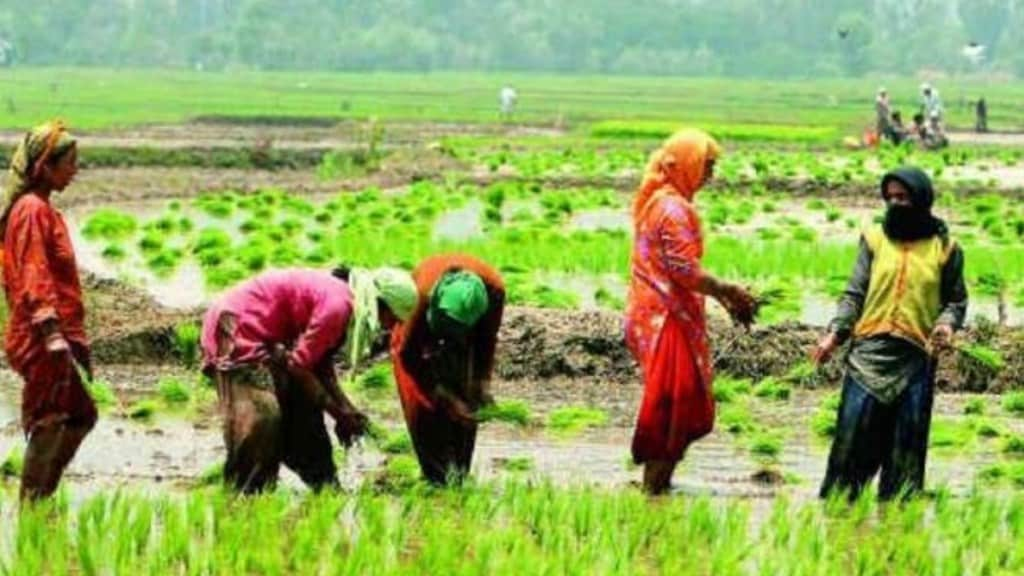By Nirvikar Singh
Four years ago, the central government attempted major reforms in agriculture. These reforms were focused on agricultural markets, with the aim of attracting more investment into the sector.
Many farmers looked forward to this possibility, and the promise of more competition and higher returns for their produce. Analysts worried that liberalisation would favour large farmers and especially corporations. But the most vociferous protests came from farmers in Northern India, who were ostensibly not subject to this new regime, since they primarily produced for the national food procurement system which was not part of the reforms.
Government procurement of large quantities of wheat and rice at guaranteed prices creates a system that is hard for farmers to give up. It is the opposite in spirit to the driving force of the 2020 reforms. Protesting farmers were worried that the farm bills were the first step in taking away their secure incomes.
In an interesting example of democracy, the government backed down and withdrew the farm bills, not because of the protests, but because of what they signalled for the outcome of looming elections in Uttar Pradesh. Electoral accountability matters, even in an imperfect democracy.
We will soon know how democracy is functioning in India, as the general election process reaches its conclusion. Since the failed attempt at agricultural reforms, much of the national policy focus has been on trying, yet again, to accelerate India’s industrialisation process.
Ultimately, India has to grow by creating productive jobs in manufacturing and in services.
This does not mean that agriculture is irrelevant. But India’s land and water resources are not suited to significant growth in agriculture — population density is high, and per capita water availability is the lowest of any large country in the world.
In any case, without development of the capabilities to transport, store, and process agricultural produce, growing more of anything would be pointless. Indeed, the farm bills were really an attempt to bring in investment for these portions of the agricultural value chain, with the hope that this would stimulate changes in the actual production.
Easing restrictions on land markets was directly aimed at production, but the implicit assumption was that private sector incentives would take care of improving the efficiency of the actual agricultural activities.
Not long before the general election process began, the central government actually took a major step toward addressing the core problem of its agricultural policy. It was announced that farmers who switch from growing paddy and sugarcane to maize and certain pulses will be able to sell whatever they produce at attractive minimum support prices.
Paddy and sugarcane are especially water-intensive, and growing them in places like Punjab is leading to environmental disaster. The new policy will also incentivise switching from wheat, which is less water-intensive, but has relied on heavy fertiliser use, resulting in soil pollution and degradation.
Growing more pulses makes tremendous sense for the nutritional needs of India’s population. It is less clear whether maize, which is envisaged as boosting ethanol production, makes sense on a large scale. And the issues of inappropriate use of fertilisers and water will remain for maize — the experience of the United States provides a clear cautionary example.
Nevertheless, the announced change is a major step in the right direction. While agriculture will not be a major driver of India’s economic growth, preventing ecological catastrophe is a precondition for any kind of long-run growth.
Dealing with agriculture also matters for the politics of economic reform. Until industrialisation actually takes off in India and draws people into urban areas, rural India is where voters take their cues. Apparently, farmers in Northern India have not forgotten about the farm bills, and trust in the current government has not been restored.
But the status quo in agriculture is not sustainable, and adjusting a broken food procurement policy is only the first step. Public sector involvement in educating and training farmers by rejuvenating decaying agricultural extension services, paying attention to equitable and reliable access to seeds and to credit, and strengthening collective action by farmers, all seem to be areas that need careful policy attention.
“Co-operative federalism” has been an overused term in the last few years. It has typically been applied to issues such as devising and implementing the goods and services tax or policies in response to the pandemic. But agricultural policy, already a state subject, is where cooperative federalism can be meaningfully implemented.
The Centre has to develop a rational food procurement policy. States must provide knowledge services to farmers, perhaps with central support. And rural local governments and farmer associations have to be able to manage local water resources and collectively represent farmers in dealing with corporate suppliers of inputs and buyers of outputs.
Food and water are central to everyone’s imagination, and therefore they are easy to use as motivators. Even in the most industrialised nations, growing food and preserving water resources are culturally important. Redesigning agricultural policy around those ideas, and starting with farmers, rather than focusing on markets and corporations, makes political and economic sense.
Nirvikar Singh, Professor of economics, University of California, Santa Cruz.


